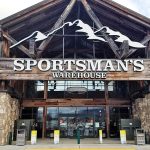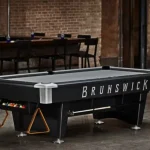Boot Barn Holdings Inc. (NYSE:BOOT) reported a loss of $3.3 million, or 13 cents a share, in its fiscal second quarter ended Sept. 26. The loss reflects special charges related to its acquisition of the Sheplers chain but also a slow down at its legacy Boot Barn stores.
The loss compares to earnings of $944,000, or 5 cents, a year ago.
On an adjusted basis, pro-forma adjusted net income was $1.2 million, or 4 cents, compared to $2.0 million, or 8 cents, in the prior-year period. Adjusted earnings exclude acquisition-related integration costs. The company had projected earnings in the range of 2 to 5 cents a share.
Adjusted gross profit eroded to 29.6 percent of sales from 32.1 percent, primarily driven by the addition of the lower-margin Sheplers business and the impact of new store openings. Merchandise margin rate at Boot Barn, excluding Sheplers, decreased 50 basis points as a result of higher freight, shrink and clearance markdowns, partially offset by an increased markup resulting from higher private brand penetration. Adjusted income from operations increased 24.6 percent to $5.8 million.
Revenues jumped 50.2 percent to $129.7 million. The gain reflects contributions from recently-acquired Sheplers, 25 new stores opened between the beginning of the third quarter last year and the end of the second quarter of this year, and a 1.6 percent increase in same store sales at the core Boot Barn business, excluding Sheplers. The quarter marked Boot Barn’s 24th consecutive quarter of positive same-store sales growth. Consolidated same-store sales inched up 0.1 percent.
While Boot Barn sales got off to a solid start in July, comp trends in its core business flattened in August and were slightly positive in September and October.
On a conference call with analysts, Jim Conroy, president and CEO, said the company’s performance in the quarter was impacted by “economic headwinds that many other retailers experienced” but also by challenges in key markets exposed to declining prices in oil and gas. Its hardest hit regions were North Dakota, Wyoming and the more rural parts of Colorado. Same-store sales in Texas also decelerated, but remained slightly positive. Sales at its California stores grew above the company average.
From a merchandising perspective, solid growth came in men's Western categories of boots, hats, and apparel, as well as work boots. Work apparel, particularly flame-resistant merchandise, was weaker due largely to the pressures in its oil and gas markets.
Regarding the integration of Sheplers, acquired in early June, the company converted point-of-sale and back-office systems, completed virtually all of the planned expense reductions, began resetting assortments, and rebranded 13 locations to Boot Barn. Said Conroy, “While still early, the rebranded stores appear to be well received by our customers.”
During the quarter, the company acquired 25 Sheplers stores and closed five of these stores. The company also opened six Boot Barn stores and closed one, ending the quarter with 201 stores in 29 states.
Due to softer trends at the Boot Barn legacy stores, the company now expects pro-forma adjusted net income of 76 to 80 cents a share, down from the company’s prior outlook of 85 to 90 cents a year ago. Consolidated same store sales are expected to grow in the low-single digits. Previously, the company had expected same-store sales growth to expand in the low to mid-single digits.
For the third quarter ended Dec. 26, pro-forma adjusted net income per diluted share is expected to arrive in the range of 47 to 49 cents per share, which compares to 60 cents a share in the same period a year ago. Same store sales growth for the Boot Barn business, excluding Sheplers, is projected to be in the flat to low-single digits. Sheplers is expected to increase mid-single digits for the quarter.















